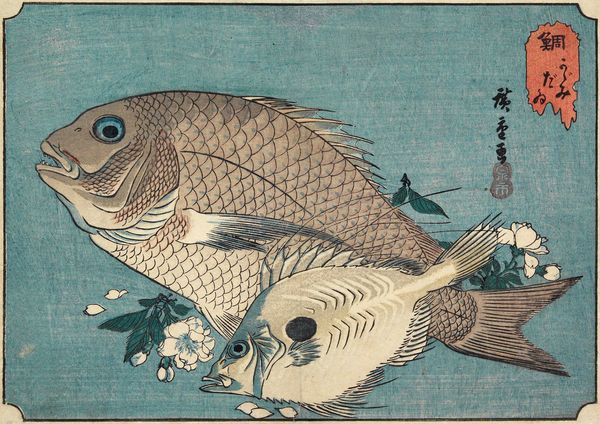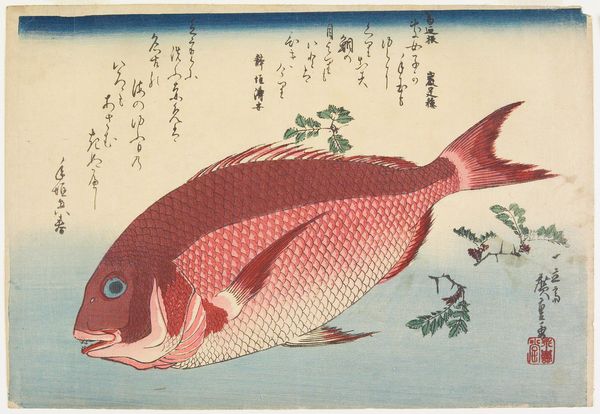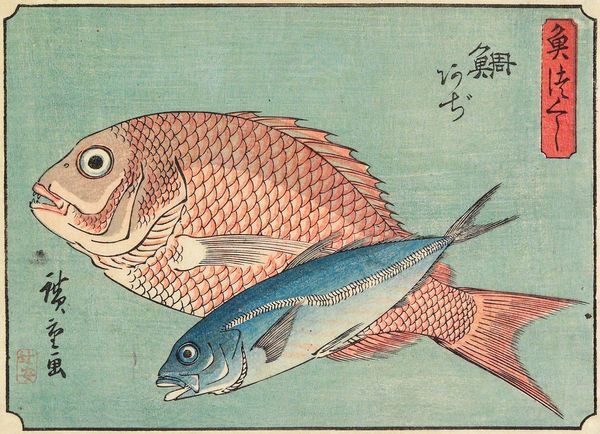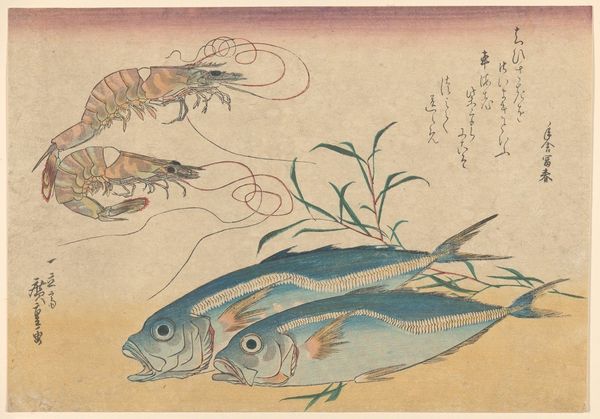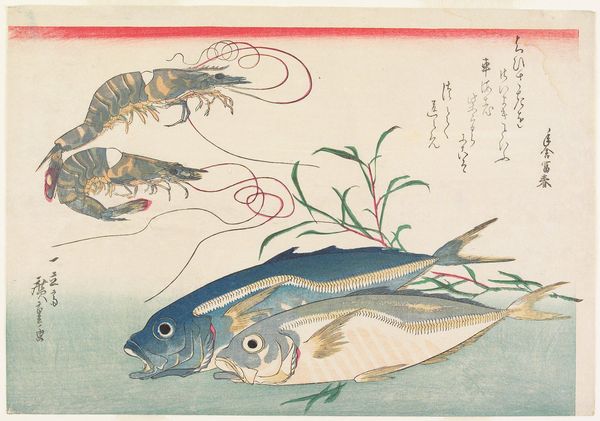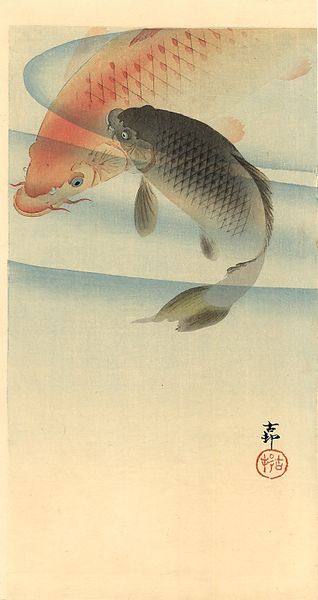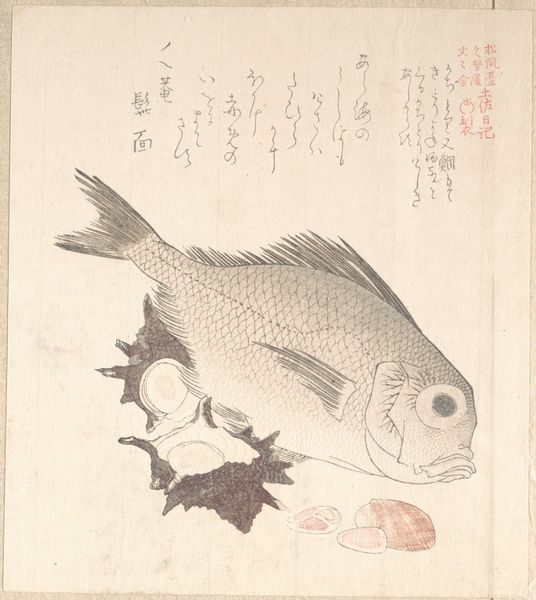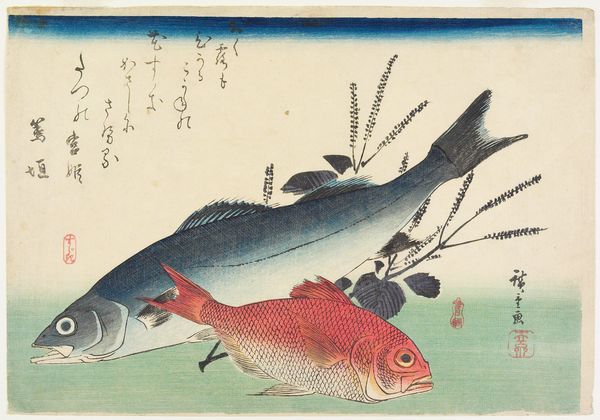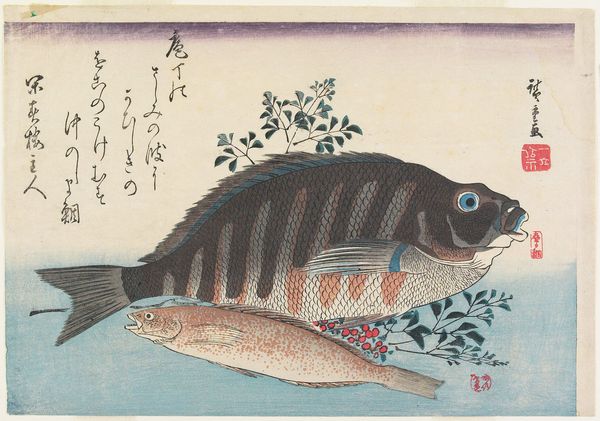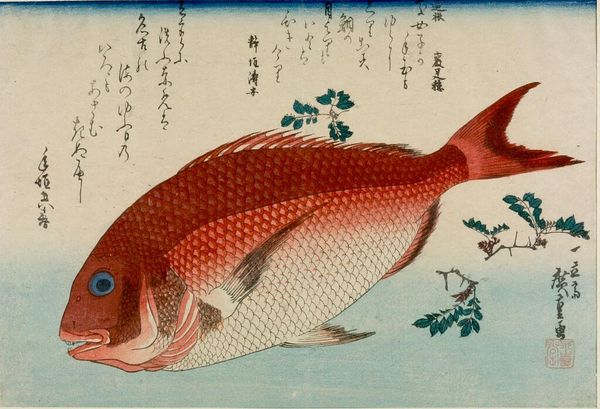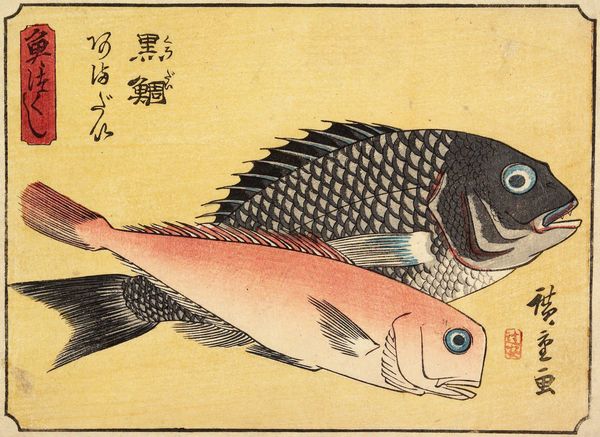
print, ink
#
blue ink drawing
# print
#
asian-art
#
ukiyo-e
#
japan
#
figuration
#
personal sketchbook
#
ink
#
coloured pencil
Dimensions: 9 3/16 × 11 1/2 in. (23.3 × 29.2 cm) (image, sheet, uchiwa-e)
Copyright: Public Domain
Curator: Right, let's take a look at "Pair of Fish," created around the 1830s by Yamada Hōgyoku. This print utilizes ink, a popular medium for Ukiyo-e artists during this period, and it's currently housed right here at the Minneapolis Institute of Art. Editor: It's kind of sweet, actually. These two fish, swimming close together, gives you this gentle, almost familial feeling. They look almost inquisitive. Makes me wonder what they are looking at. Curator: It’s tempting to read a symbolic depth into such an intimate pairing. Consider the socio-political climate of 19th century Japan: this period was defined by strict hierarchical structures and isolationist policies. The two fish could signify any kind of social union pushing against the restrictive expectations imposed on their freedoms of expression. Editor: Hmmm, I can get there but honestly, they mostly remind me of swimming in tandem... I bet Hogkyoku really paid attention to how fish look and move. The attention to detail is remarkable when you think it was made so long ago and likely printed as part of a set. It's delicate but accurate, with subtle color variations and fin details... you know, I can almost smell the water. Curator: That brings us to an interesting question: why fish? What purpose would such a humble subject fulfill at the time it was made? Consider the deep rootedness of Shinto and Buddhist beliefs, with their intricate links to the natural world... fish symbolize prosperity, abundance, and perseverance, so by depicting two fish, Hogkyoku tapped into something very profound about the period's desires, values, and struggles. Editor: Or maybe he just liked drawing fish. Haha! Seriously though, sometimes I think we overcomplicate the artist's intentions. Maybe Hōgyoku simply appreciated the elegant lines and silvery scales, like any artist pursuing the beautiful form. Curator: Well, sure, visual appreciation absolutely counts... but acknowledging that social frameworks informed not just the *content* of his print but the availability of materials, resources and audience is crucial here. We should keep the dialogue going between historical context and our current framework. Editor: Okay, point taken. Context is key. Though personally I will probably think of the joy of quiet observation the next time I am near water and see little flashes of reflected light. Curator: Then in that sense, we're both making a link to our own time, and it has been a worthy pursuit.
Comments
No comments
Be the first to comment and join the conversation on the ultimate creative platform.
